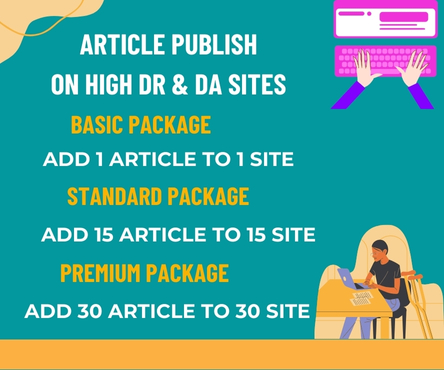In the ever-evolving landscape of web development and design, user experience has become a paramount focus. As websites compete for attention, ensuring a seamless and efficient user experience is crucial. This is where Core Web Vitals come into play. These metrics, introduced by Google, provide a standardized way to measure the quality of user experience on the web. For developers and designers, understanding and optimizing these metrics is essential for creating high-performing websites that not only satisfy users but also rank well in search engine results. https://weddingphotographerwebdesign.com/
What Are Core Web Vitals?
Core Web Vitals are a set of specific factors that Google considers important in a webpage’s overall user experience. They focus on three key aspects:
- Largest Contentful Paint (LCP): This metric measures loading performance. It tracks the time it takes for the largest visible content element (such as an image or a block of text) to load. A good LCP score is 2.5 seconds or less. If your website takes longer than this to display its main content, users may become frustrated and leave.
- First Input Delay (FID): FID measures interactivity. It quantifies the time from when a user first interacts with a page (like clicking a link or tapping a button) to the time when the browser is able to respond to that interaction. A good FID score is less than 100 milliseconds. A delay longer than this can lead to a poor user experience, as users may feel that the site is unresponsive.
- Cumulative Layout Shift (CLS): This metric assesses visual stability. It measures how much the content on a page shifts during loading. A CLS score of less than 0.1 is considered good. High CLS scores can lead to frustrating experiences, especially if users accidentally click on the wrong element due to unexpected shifts in layout.
Why Core Web Vitals Matter
User Experience
The primary reason to focus on Core Web Vitals is to enhance user experience. A website that loads quickly, responds promptly to user interactions, and maintains a stable layout is more likely to keep users engaged. In contrast, a site that performs poorly on these metrics can lead to high bounce rates and lost opportunities.
SEO Benefits
Google has made it clear that Core Web Vitals are a ranking factor in its search algorithm. Websites that provide a better user experience are more likely to rank higher in search results. This means that optimizing for Core Web Vitals can directly impact your website’s visibility and traffic.
Competitive Advantage
In a crowded digital landscape, providing an exceptional user experience can set your website apart from competitors. By prioritizing Core Web Vitals, you can create a more appealing and efficient site that attracts and retains users.
Best Practices for Optimizing Core Web Vitals
For Developers
- Optimize Images: Use modern image formats like WebP and ensure that images are appropriately sized for different devices. Implementing responsive images can significantly improve loading times.
- Minimize JavaScript: Reduce the amount of JavaScript that runs on page load. Consider deferring non-essential scripts and using code-splitting techniques to load only the necessary code for the initial render.
- Implement Lazy Loading: Load images and videos only when they are in the viewport. This can significantly improve LCP by reducing the amount of content that needs to load initially.
- Use a Content Delivery Network (CDN): A CDN can help deliver content more quickly by caching it on servers closer to the user, reducing latency and improving loading times.
- Optimize Server Response Times: Ensure that your server is configured to respond quickly to requests. This may involve optimizing your backend code, using efficient database queries, and leveraging caching strategies.
For Designers
- Avoid Layout Shifts: Use fixed dimensions for images, videos, and ads to prevent unexpected shifts in content. This helps maintain a stable layout and improves CLS scores.
- Design for Performance: Create designs that prioritize speed and usability. Ensure that interactive elements are easily accessible and that the overall design does not hinder performance.
- Prioritize Above-the-Fold Content: Ensure that the most important content loads first. This can improve LCP and provide users with a better initial experience.
- Test Across Devices: Design with responsiveness in mind. Test your designs on various devices and screen sizes to ensure a consistent experience for all users.
Tools for Measuring Core Web Vitals
To effectively monitor and optimize Core Web Vitals, developers and designers can utilize several tools:
- Google PageSpeed Insights: This tool analyzes the content of a web page and provides suggestions for improving performance, including Core Web Vitals metrics.
- Lighthouse: An open-source tool that audits performance, accessibility, and SEO. It provides detailed reports on how to improve Core Web Vitals.
- Web Vitals Chrome Extension: This extension allows real-time monitoring of Core Web Vitals metrics as users interact with the site, providing immediate feedback on performance.
- Search Console: Google Search Console offers a Core Web Vitals report that highlights issues affecting your site’s performance, allowing you to prioritize fixes.
Conclusion
Core Web Vitals are not just technical metrics; they represent the foundation of a positive user experience. By focusing on LCP, FID, and CLS, developers and designers can create websites that are not only fast and responsive but also visually stable. This commitment to user experience can lead to higher engagement, lower bounce rates, and improved search engine rankings. As the digital landscape continues to evolve, prioritizing Core Web Vitals will be essential for anyone looking to succeed in web development and design. Embracing these practices will ensure that your website meets the expectations of users and stands out in a competitive market.

